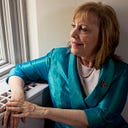Surviving Our ‘Cloudy Evenings Of The Soul’
A strange object appeared in the winter skies this week over the landscape where I live. It was the sun.
Eight days had passed since those of us in central Illinois had seen the sun’s glow or felt its warmth. Clouds, and sometimes fog, became our daytime companions. One morning the fog was so thick I strained to discern familiar landmarks for the turns I take on country roads leading to the little cabin where I go to write and pray. In all, Illinois experienced 18 overcast days in January, the second highest number of cloudy days in a single month since 1998.
A certain lethargy sets in — what spirituality author Barbara Brown Taylor compares to “cloudy evenings of the soul.” I had to fight the urge to take afternoon naps. My concentration waned. Friends told of experiencing the same tiredness and sense that something indefinable was pressing on them, the way the clouds were bearing down on treetops.
Just as quickly as it had absconded, the sun returned, for a few days at least. We greeted the sun and its traveling companion — blue sky — as one would welcome a call or letter from a lost friend, grateful for the reconnection but still a bit bewildered about why we fell out of touch in the first place.
The sun’s return spilled out an infusion of energy. The now-clear night sky offered its own delights. That first evening after thick clouds had traveled on, a friend I was walking with kept gazing up, exclaiming, “Look at all those stars!”
Even with the sun’s reappearance, something already had changed for me over the course of this latest cloud-stay. I realized that I, alone, am responsible for my moods. If I was going to emerge from my funk, I had better attune myself to whatever small graces were surely hiding in plain sight. It might mean watching an elegant ballet of leaves partnering with the wind, or else spotting — as I did one afternoon — the green shoots of an early crocus poking out of the soil.
I’ve often wondered whether I could outlast one of the long, dark winters people experience in Alaska. Most visitors to the state choose to arrive in summer. I fantasize about going in the heart of winter when day after day stretches into darkness. I’d like to see how I’d survive.
Some Alaskans make it through with the help of light therapy lamps and massive doses of Vitamin D, not to mention anti-depressants and a fair amount of alcohol. I like to think the dark days — just like the cloudy ones I experienced in my home state of Illinois — would serve as a mental compass orienting me to go more deeply into my interior life.
The new HBO-Max series “True Detective: Night Country” takes place in the fictional town of Ennis, Alaska during “the great night” of prolonged darkness. In one scene, the two female detectives who are the series’ main characters — the one a member of the indigenous Alaskan community, the other an Anglo transplant — converse in a police vehicle on route to a crime scene. One asks the other what she does to cope in the times of darkness.
“I pray,” the indigenous detective responds.
“You mean, like, you talk to God?” the Anglo detective scoffs.
“No, I listen,” the other detective says.
I like to think I’d be like that indigenous detective. Listening.
It would be a challenge since I’ve always had a mistrust of both night and the dark. My neighbors often joke that they know when my husband is out of town and I am home alone because the lights in our house stay on all night.
Recently, though, I have been listening to a series of brief reflections on “The Treasures of Darkness” featuring Barbara Brown Taylor and Matthew Bloom, co-founder of the well-being research group, Ritual. Darkness, Bloom reminds us, “allows us to look beyond the obvious and beneath the surface to see what is really there.”
Bloom’s point is that we need darkness — and I would add, cloudy days — as much as we need light. The dark, the cloudy days, are part of the natural order of existence. It is the part that asks us to slow down, to rest, to look and look again.
“I have learned things in the dark I could never have learned in the light,” Bloom says.
On February 3, we passed the halfway point between the Winter Solstice and the Spring Equinox. The day before, that prognosticating Pennsylvania groundhog, Punxsutawny Phil, failed to see his shadow, signaling — like that budding crocus I saw — an early spring. Realistically, there likely will be clouds and fog yet to endure and my spring-heralding crocus might not survive if there is a sudden cold snap.
Can we ready ourselves to embrace those cold, “cloudy evenings of the soul” as Brown Taylor calls them? Can we reflect on what these lethargic days might have to teach us?
What can we learn from the darkness, from night?
